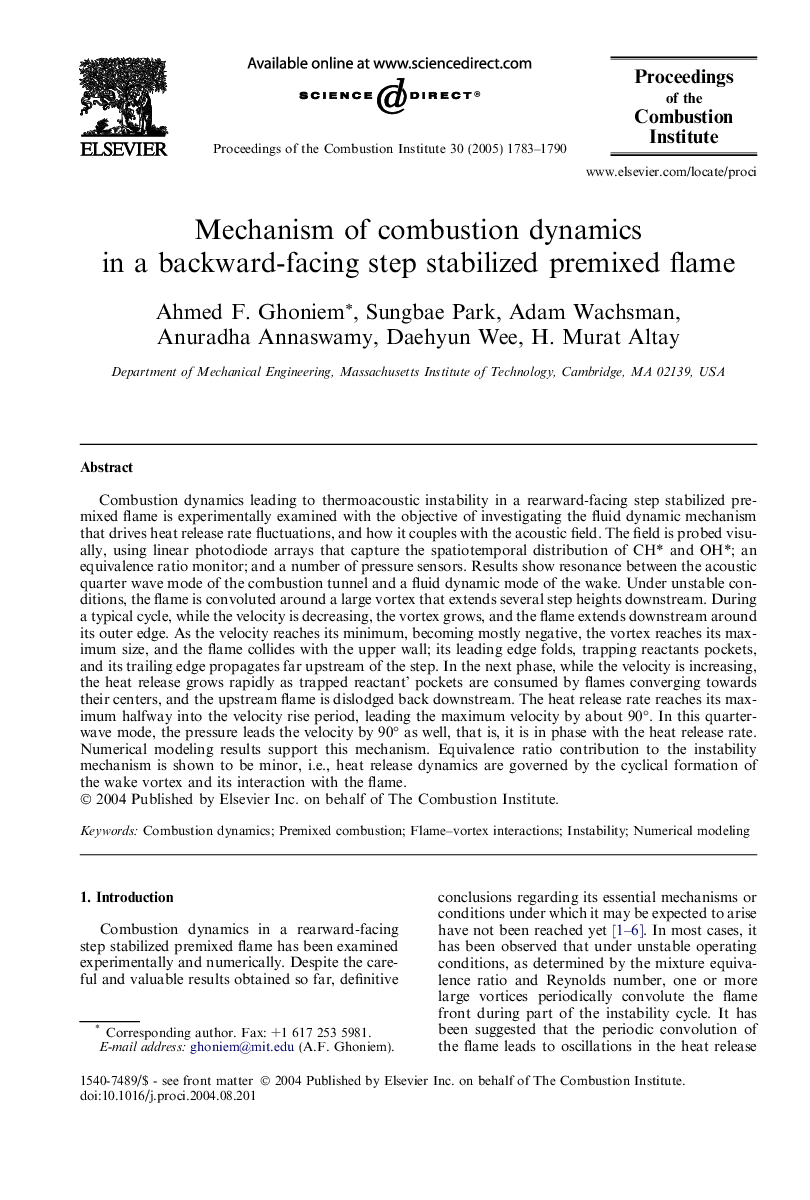| Article ID | Journal | Published Year | Pages | File Type |
|---|---|---|---|---|
| 240918 | Proceedings of the Combustion Institute | 2005 | 8 Pages |
Combustion dynamics leading to thermoacoustic instability in a rearward-facing step stabilized premixed flame is experimentally examined with the objective of investigating the fluid dynamic mechanism that drives heat release rate fluctuations, and how it couples with the acoustic field. The field is probed visually, using linear photodiode arrays that capture the spatiotemporal distribution of CH* and OH*; an equivalence ratio monitor; and a number of pressure sensors. Results show resonance between the acoustic quarter wave mode of the combustion tunnel and a fluid dynamic mode of the wake. Under unstable conditions, the flame is convoluted around a large vortex that extends several step heights downstream. During a typical cycle, while the velocity is decreasing, the vortex grows, and the flame extends downstream around its outer edge. As the velocity reaches its minimum, becoming mostly negative, the vortex reaches its maximum size, and the flame collides with the upper wall; its leading edge folds, trapping reactants pockets, and its trailing edge propagates far upstream of the step. In the next phase, while the velocity is increasing, the heat release grows rapidly as trapped reactant’ pockets are consumed by flames converging towards their centers, and the upstream flame is dislodged back downstream. The heat release rate reaches its maximum halfway into the velocity rise period, leading the maximum velocity by about 90°. In this quarter-wave mode, the pressure leads the velocity by 90° as well, that is, it is in phase with the heat release rate. Numerical modeling results support this mechanism. Equivalence ratio contribution to the instability mechanism is shown to be minor, i.e., heat release dynamics are governed by the cyclical formation of the wake vortex and its interaction with the flame.
